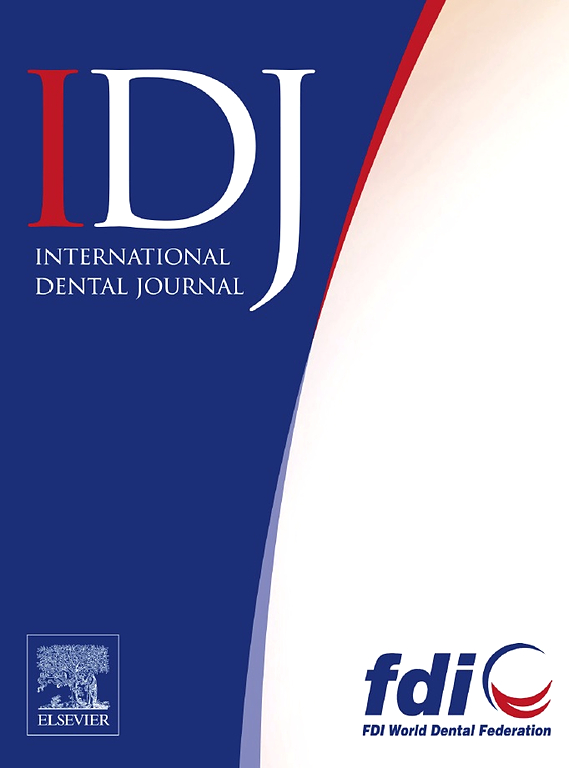SOX11 and GLIS2: Novel Biomarkers for Understanding the Progression of Oral Leukoplakia
IF 3.2
3区 医学
Q1 DENTISTRY, ORAL SURGERY & MEDICINE
引用次数: 0
Abstract
Background
Oral leukoplakia (LP) is a common precancerous lesion that can progress to oral squamous cell carcinoma (OSCC). Although various risk factors have been identified, the molecular mechanisms and biomarkers of LP remain insufficiently understood.
Methods
This study integrated single-cell RNA sequencing with bulk RNA sequencing data from leukoplakia tissues to investigate the transcriptional regulatory mechanisms within LPtissues. Our aim is to identify key molecular markers and their associated pathways. Furthermore, by analyzing survival data from OSCC in the The Cancer Genome Atlas(TCGA) database, we assessed the prognostic significance of these molecular markers in tumors. Finally, we validated the potential roles of relevant molecular markers in the progression of leukoplakia using patient LP tissue samples.
Results
The analysis revealed that single-cell RNA sequencing data indicated that fibroblasts in LP tissues possess a unique gene regulatory network, exhibiting significantly different transcriptional characteristics compared to normal tissues. We identified SOX11 and GLIS2 as LP-specific molecular markers, with their expression significantly elevated in LP tissues compared to normal tissues. Transcriptomic profiling of LP reveals that SOX11 and GLIS2 positively correlate with the activation of epithelial-mesenchymal transition (EMT) and angiogenesis. Additionally, analysis of OSCC samples demonstrated that high expression levels of SOX11 and GLIS2 were associated with poor prognosis. Immunohistochemical staining further showed a gradual increase in the expression of SOX11 and GLIS2 during the progression of leukoplakia, supporting their potential application as biomarkers.
Conclusion
As key transcription factors in LP, SOX11 and GLIS2 may influence the occurrence and development of lesions by regulating EMT and angiogenesis biological processes. They have the potential to serve as biomarkers and therapeutic targets for LP and OSCC, providing new insights into understanding the mechanisms of LP and developing treatment strategies.
SOX11和GLIS2:了解口腔白斑进展的新生物标志物
背景:口腔白斑是一种常见的癌前病变,可发展为口腔鳞状细胞癌。虽然已经确定了各种危险因素,但LP的分子机制和生物标志物仍然不够清楚。方法将单细胞RNA测序与白斑组织的大量RNA测序数据相结合,研究白斑组织内的转录调控机制。我们的目标是确定关键的分子标记及其相关途径。此外,通过分析癌症基因组图谱(TCGA)数据库中来自OSCC的生存数据,我们评估了这些分子标记物在肿瘤中的预后意义。最后,我们使用患者LP组织样本验证了相关分子标记物在白斑进展中的潜在作用。结果分析显示,单细胞RNA测序数据表明,LP组织中的成纤维细胞具有独特的基因调控网络,与正常组织相比,表现出明显不同的转录特征。我们发现SOX11和GLIS2是LP特异性分子标记,与正常组织相比,它们在LP组织中的表达显著升高。LP的转录组学分析显示,SOX11和GLIS2与上皮-间质转化(EMT)和血管生成的激活呈正相关。此外,对OSCC样本的分析表明,SOX11和GLIS2的高表达水平与预后不良相关。免疫组织化学染色进一步显示,在白斑的进展过程中,SOX11和GLIS2的表达逐渐增加,支持它们作为生物标志物的潜在应用。结论SOX11和GLIS2作为LP的关键转录因子,可能通过调控EMT和血管生成生物学过程影响病变的发生和发展。它们有潜力作为LP和OSCC的生物标志物和治疗靶点,为理解LP的机制和制定治疗策略提供新的见解。
本文章由计算机程序翻译,如有差异,请以英文原文为准。
求助全文
约1分钟内获得全文
求助全文
来源期刊

International dental journal
医学-牙科与口腔外科
CiteScore
4.80
自引率
6.10%
发文量
159
审稿时长
63 days
期刊介绍:
The International Dental Journal features peer-reviewed, scientific articles relevant to international oral health issues, as well as practical, informative articles aimed at clinicians.
 求助内容:
求助内容: 应助结果提醒方式:
应助结果提醒方式:


